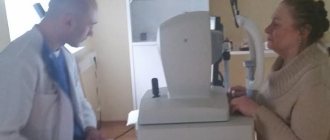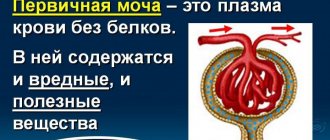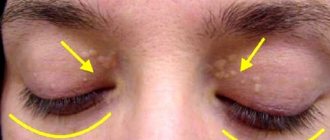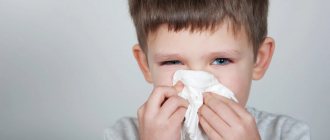When they talk about a weak shoulder girdle in a child, they mean the muscles surrounding the scapula, collarbone, shoulder joint, shoulder, everything that is involved in their fixation or movement. The shoulder girdle is divided into the upper, everything above the shoulder joint, and the lower, between the shoulder and elbow joints. For children, for example, at 3-4 months, the correct functioning of the upper shoulder girdle is important, and from 5 months, the lower shoulder girdle is added here. The problem of muscle hypotonia among infants is very common. Solving it requires the skills of children's gymnastics and massage. Why strengthen your child's shoulder girdle? Is it possible not to do this? Children need support from their arms to acquire new skills, such as lying on their stomachs, leaning on their elbows, getting on all fours, and crawling. Without strong hands, these skills are not possible.
Why does hypotension occur?
Hypotonicity can be both the result of adaptation of the nervous system to stress, and a sign of more severe (organic) disorders.
To identify the cause and prevent possible more severe disorders, parents need to visit a neurologist who will conduct all the necessary studies. Possible causes of hypotension:
- Complications during childbirth, fetal asphyxia;
- Severe pregnancy;
- Improperly organized nutrition of the baby;
- Genetic diseases and various developmental defects;
- Low birth weight, prematurity;
- Bad habits of the mother during pregnancy;
- Viral and/or infectious diseases of the newborn;
- Excess of vitamin D in the body.
An earlier visit to a neurologist will help solve the problem as quickly and effectively as possible, without waiting for possible complications.
Hypotension in children
There are non-drug and drug methods for treating hypotension in a child. For labile arterial hypotension, it is better to carry out therapy without the use of medications. If hypotension is persistent and prolonged, a combination of non-drug therapy and medications is used.
Non-drug treatment consists of:
- normalization of the child's regime
- good sleep at night
- spending about 2 hours outdoors every day
- exercise in the morning
- water procedures after exercise for vascular tone
- eating 4-6 times a day without limiting salt on an optimal water regime
Treatment without medications also includes massage:
- cervical-collar area
- general
- calf muscles
- hands
For hypotension, physiotherapeutic methods of treatment are used - Vermeule electrophoresis on the collar area with solutions of caffeine, magnesium sulfate, bromocaffeine, mesatone. For children and adolescents, water procedures are also relevant as treatment - fan and circular showers, underwater shower-massage. Doctors can recommend medicinal baths, psychotherapy, etc.
If non-drug therapy does not produce an effect, the following drugs are used:
- anticholinergic
- adaptogens
- cerebroprotectors
- nootropics
- antioxidants
- antidepressants
- tranquilizers
In most cases, treatment of hypotension in children with medications begins with adaptogens, most often herbal. These drugs are given to the child once every 24 hours in the morning. Course – up to 3 weeks. The use of nootropic drugs is necessary for children with arterial hypotension, since they often have cerebral insufficiency and immaturity of cortical-subcortical relationships. The following drugs are effective:
- piracetam
- glycine
- cortexin
- phenibut, etc.
If there is a need to improve cerebral hemodynamics and microcirculation, the child is given courses of cinnarizine and vinpocetine. Actovegin and Oxibral have an optimizing metabolic effect. Doctors can prescribe antioxidant therapy and correction of energy-deficiency diathesis for the child. Tranquilizers are prescribed to children with emotional stress, neurotic manifestations, hidden anxiety and phobias. Mainly used are activating tranquilizers, daytime anxiolytics (Grandaxin, trioxazine, etc.)
In any case, treatment requires an integrated approach. Therefore, independent choice of drugs and other methods may not have the desired effect. Be sure to consult an experienced doctor.
Symptoms
Parents can suspect hypotension simply by observing their child. Immediately after birth, the newborn exhibits physiological hypertonicity, so decreased muscle tone is immediately noticeable. At an older age, tone disturbances are also noticeable.
Possible signs:
- During the newborn period, the baby's arms and legs are not tucked towards the body; he lies in the “frog” pose with straightened arms and legs;
- Refusal of breastfeeding;
- Frequent regurgitation;
- Does not turn the head, does not hold the head at 3-4 months;
- Does not roll over at 5-6 months;
- Does not sit up independently at 6-7 months;
- Does not crawl on all fours at 7-9 months;
- Does not hold objects in hands (at 3-4 months);
- Lethargic, unemotional.
Additional diagnostics are carried out by the doctor during the examination. Looks for the presence or absence of neurological signs of hypotonicity, the presence of pathological reflexes, and, if necessary, prescribes additional research methods: ultrasound, neurosonography, EEG, MRI and others.
How to strengthen a weak shoulder girdle for a 3-4 month old child?
The main strengthening effect is, of course, the use of muscles for their intended purpose, i.e. gymnastics, but you need to start small, with a massage. Before exercise, it is advisable to warm up the muscles and give them a slight toning state. Vigorous kneading is carried out according to the classical massage scheme, we are primarily interested in the biceps, triceps, deltoid, scapula muscles, pectoralis major and minor. We tone them up with a massage, and then begin strengthening exercises.
1. “boxing” lying on your stomach and on your back, these are the most effective exercises.
2. Handle pull-ups. If the reflex does not work, then just small tugs on the handles while rocking in different directions.
3. Lying on his stomach, place the baby on his elbows and hold this position for several minutes.
4. Lying on his stomach with support on his elbows, rock the baby to the right and left, shifting the weight alternately to the elbows.
5. Starting from 3 months, place the baby more often on the floor, on his stomach.
6. Riding a fitball while lying on your stomach.
If left untreated
It is important to identify hypotension in time. Moms who have no experience with babies may not notice problems in their first child. It’s good when an experienced person is nearby or a doctor identifies the violation. If the decreased tone is not treated, it will affect the further development of the child. Much later he will begin to hold his head, crawl, and walk.
Violation of the appearance of these skills causes a delay in mental and speech development in the child. The development of his central nervous system occurs through the activation of motor functions. It is better to play it safe and consult a neurologist in vain than to miss alarming symptoms.
It is worth considering one more detail: hypotonia can manifest itself at different ages. It can be diagnosed almost immediately after birth - by checking reflexes. In this case, the cause of the disorder usually lies in birth trauma. Also, a violation of muscle tone can appear at any age, but its appearance is especially dangerous in the first 2 years of life, since this most often indicates a disturbance in the development of the central nervous system. At an older age, hypotension is usually a sign of complications after infectious or viral diseases.
Muscle tone
Muscle tone
July 11, 2016
Quite often, at an appointment with a pediatrician or neurologist, parents are told that the child has altered muscle tone and needs treatment. What is muscle tone, what does it depend on, and how do these disorders threaten the baby?
First of all, muscle tone depends on the work of the nervous system, which helps to form the child’s motor activity, that is, to develop motor functions in a timely manner. Changes in tone can be manifested by its increase (hypertonicity) and decrease (muscle hypotonia). It can also change when periods of 5th increase and decrease alternate, which is commonly called muscular dystonia. Changes in muscle tone can be mild or severe - it all depends on the degree of damage to the nervous system. And although these changes are not a disease, very often they become one of the important manifestations of possible serious diseases. With an increase in muscle tone, the child involuntarily throws his head back due to tension in the back muscles, it is difficult for him to spread his legs, and he walks “on his toes.” The child may cross his legs at the level of his feet or shins, or place his feet incorrectly when they are turned inward. In mild cases, changes in tone are temporary and go away on their own by the end of the first or second month of life. More persistent changes in tone in combination with other neurological manifestations are signs of cerebral palsy (CP).
The causes of decreased muscle tone can be hypoxia during intrauterine development and childbirth, or birth trauma. During the first days after birth, a decrease in tone indicates more severe damage to the nervous system. Hypotonia, floppy child syndrome (decreased motor activity) or floppy baby condition (spread out child) are observed with spinal cord lesions, polio, and neuromuscular diseases. Typically, such children move little, their arms and legs bend easily (like a rag doll), and due to muscle weakness, sucking and swallowing reflexes may be impaired. In addition, hypotension accompanies a number of hereditary diseases (Down's disease, for example), as well as diseases associated with metabolic disorders and the functioning of the endocrine system, which without proper treatment lead to mental retardation.
Necessary research
To make a diagnosis, a pediatrician or neurologist may prescribe the following examinations to the child: electroencephalography, echoencephalography, neurosonography (ultrasound examination of the brain), computed tomography of the brain and spinal cord. Electromyographic studies play an important role in the diagnosis of neuromuscular diseases. Currently, geneticists have a number of methods that make it possible to diagnose chromosomal diseases in utero, and in the early stages of pregnancy. Treatment of changes in muscle tone is carried out only after consultation with a specialist. In mild cases, the effect appears after massage and physical therapy. In more severe cases of perinatal encephalopathy and the development of cerebral palsy, various medications are additionally prescribed that affect muscle tone, B vitamins, and vascular drugs. Physiotherapy (paraffin baths, electrophoresis, electrical stimulation of muscles, special styling, prevention and development of contractures), and acupuncture plays an important role in treatment. The treatment regimen is selected and developed by the doctor, who also evaluates the effectiveness of the treatment over time.
Back
Treatment of hypotension
First, the doctor conducts a thorough diagnosis to find out the cause of hypotension. If it is not a symptom of more severe disorders, then, depending on the severity of the condition, the following treatment measures may be prescribed:
- massage;
- physiotherapy;
- reflexology;
- osteopathic treatment;
- correctional classes with teachers (exercises are selected individually, taking into account the patient’s age, severity of disorders and other characteristics and are carried out regularly - this is the only way to get results);
- prescription of drug therapy and nutraceuticals.
Therapy for the disorder involves an integrated approach and the active assistance of parents - their participation in the development of the child.
Feedback - a child with a weak shoulder girdle cannot hold his head up
We would like to express our deep gratitude to Pavel for the help provided to our four-month-old son! The doctor is very attentive, tactful and punctual, a true professional in his field! At the first appointment, he correctly identified the problem, explained the action plan in detail, and by the 2-3rd session the changes were obvious. They complained that the son was absolutely unable to hold his neck and arms in a position on his stomach. Now we roll over and stand on our elbows, even holding our necks for a long time and with pleasure. Pavel immediately found a common language with the child, special thanks for your kindness, attention and accuracy!
More detailsSign up
Acquired muscle diseases
Acquired muscle diseases can be of inflammatory, infectious, drug, or toxic origin.
Inflammatory diseases of human muscle - polymyositis, dermatopolymyositis, inclusion body myositis, sarcoid myopathy.
Infectious myositis can be viral, bacterial, parasitic, etc. The main symptoms - muscle weakness and pain - appear acutely. Sometimes they may be accompanied by skin lesions (dermatopolymyositis). A distinctive feature of the course of these diseases is an increase in body temperature.
Hyperkinetic syndrome causes
Among the causes of violent uncontrolled movements, doctors identify neurological disorders. For example, tremor that appears in patients suffering from Parkinson's disease.
Also among the reasons, experts name damage to the parietal and occipital lobes of the brain, hemorrhagic stroke, radiation injuries and other diagnoses. Research is being conducted to accurately determine the disease that caused the syndrome. First of all, MRI, which is used to determine the area of the lesion in the brain.
Hypotonic hyperkinetic syndrome
This pathology is rare in childhood. Patients suffer from violent involuntary movements in various parts of the body. It develops when there is damage to the putamen and caudate nucleus, disorders of the striatal part of the extrapyramidal nervous system. In this case, the following occurs:
- tics;
- tremor;
- sweeping movements of the limbs with great force;
- rapid choreic hyperkinesis and other movements that the patient is not able to control.
The pathology is caused by many neurological diseases.











